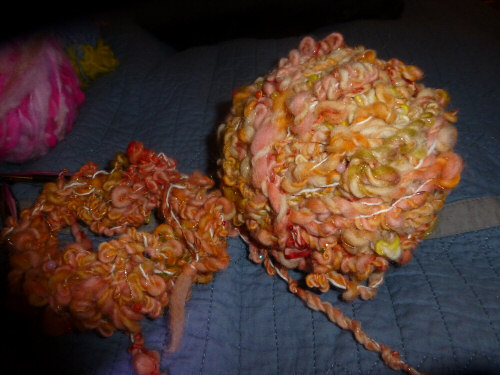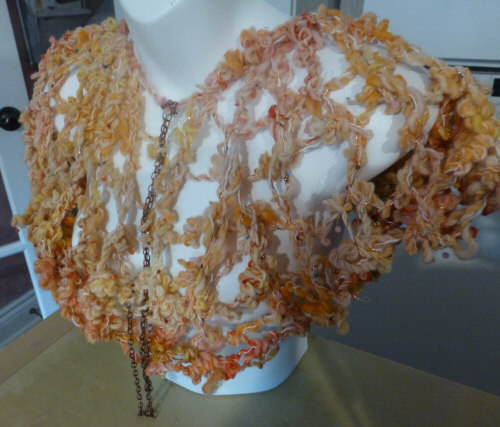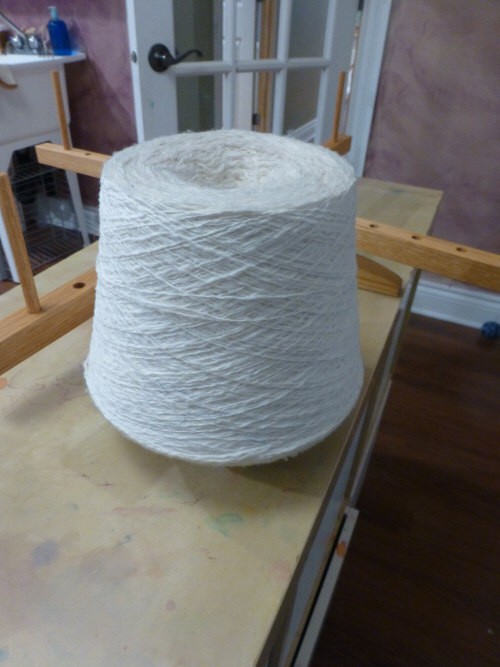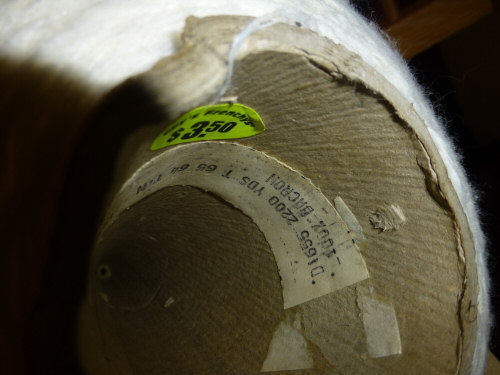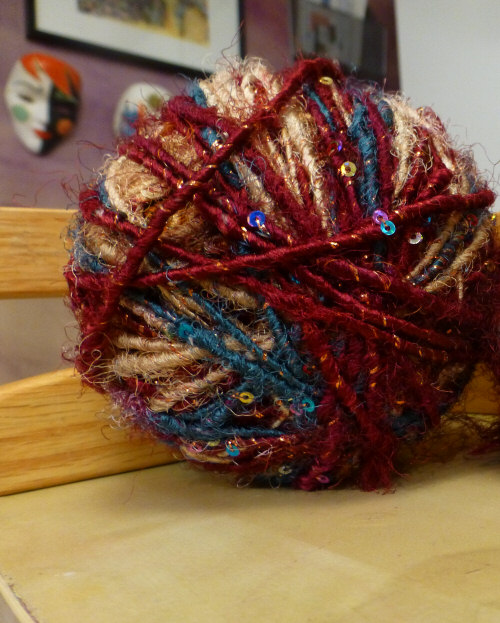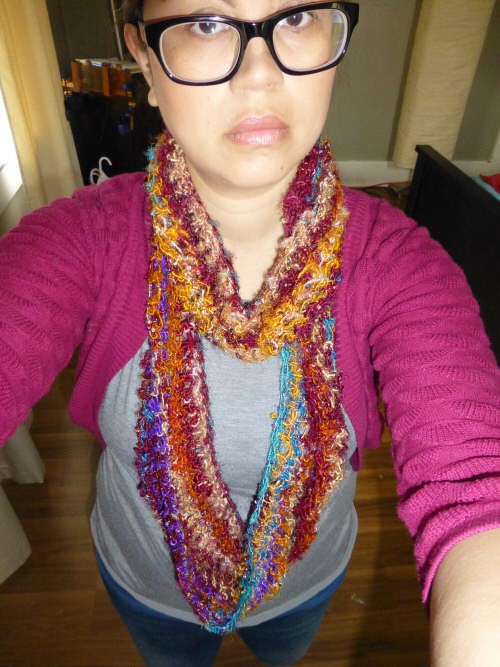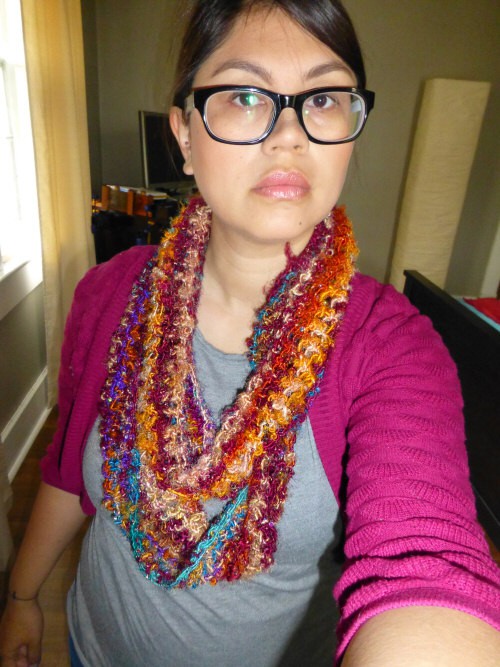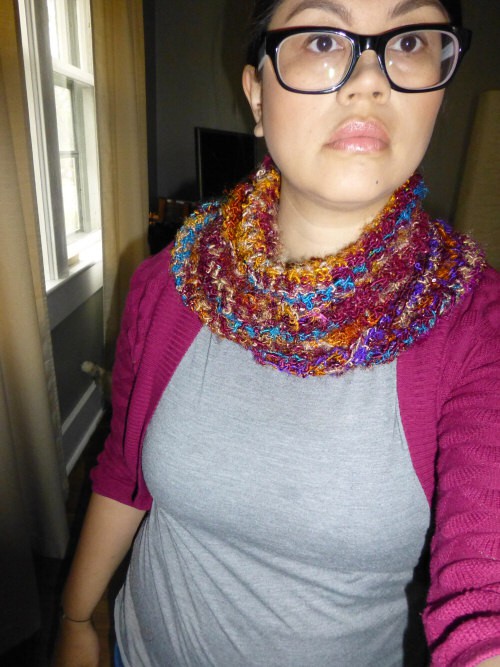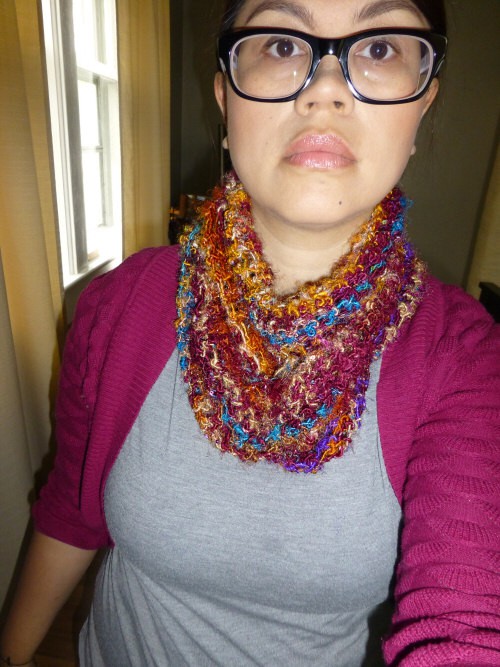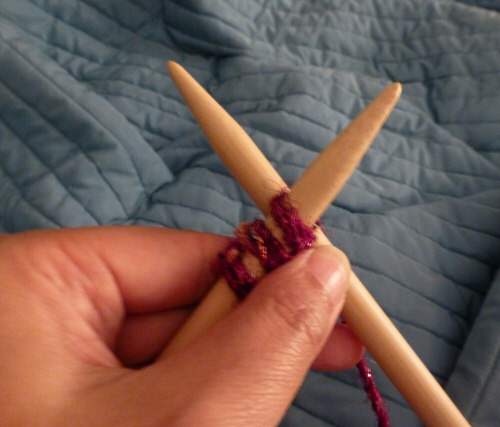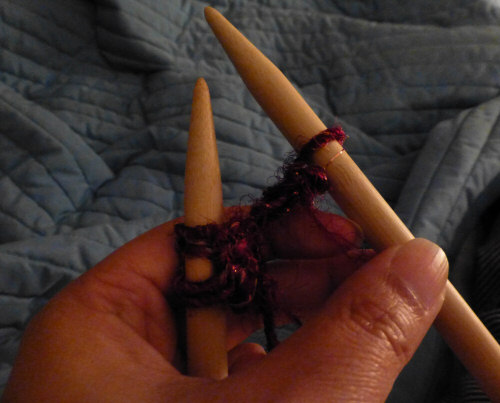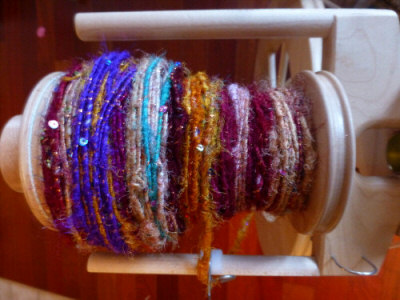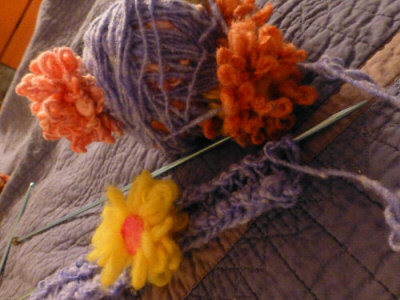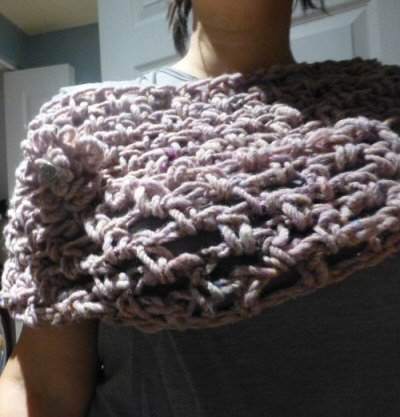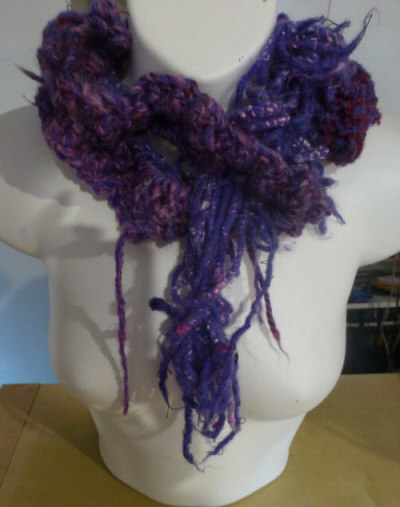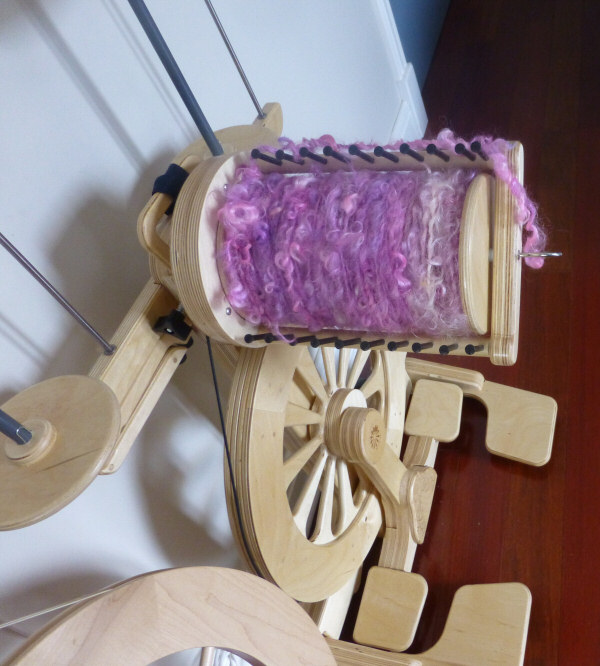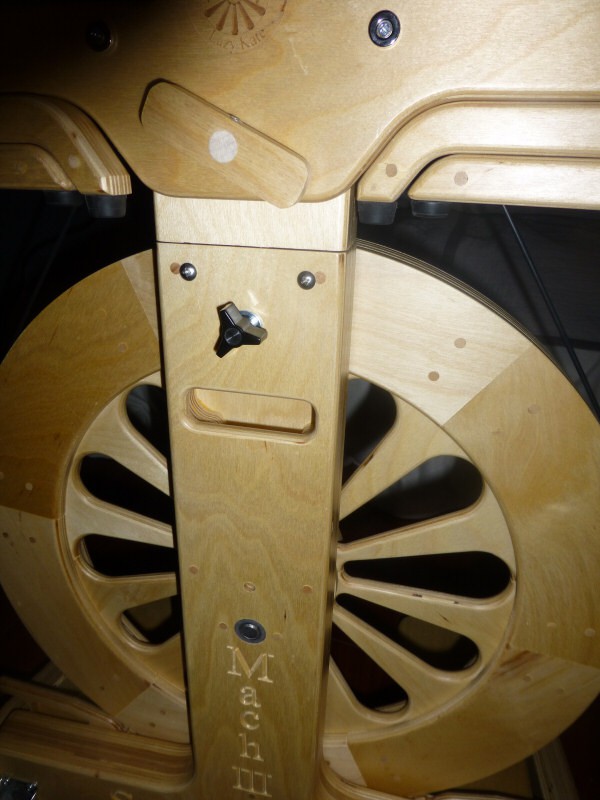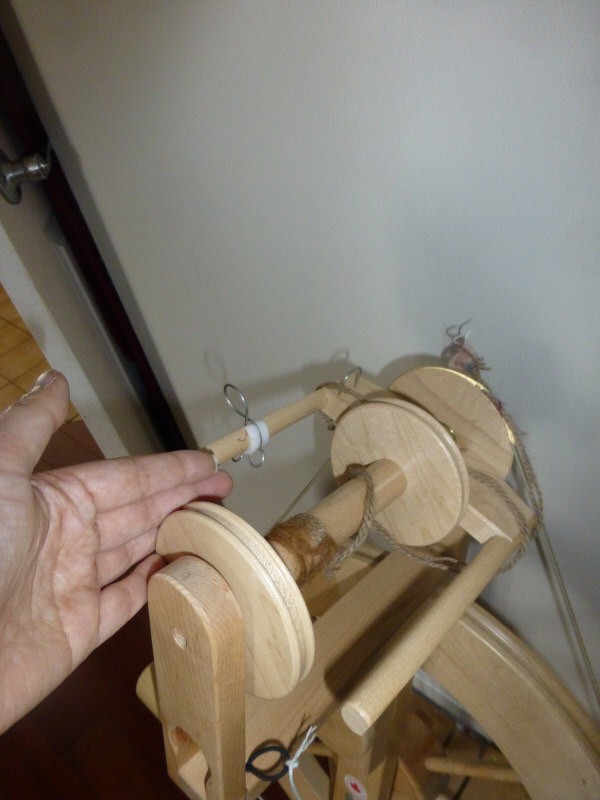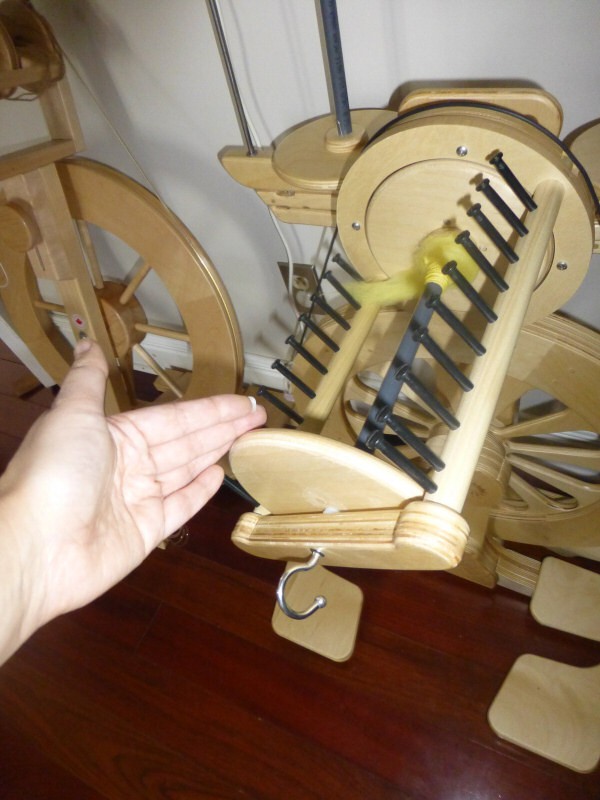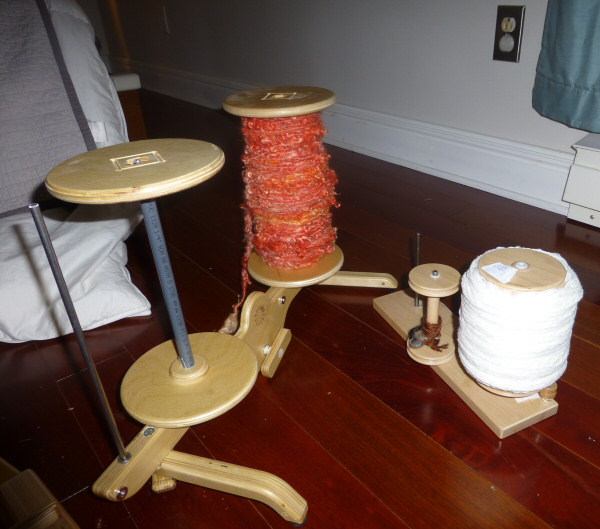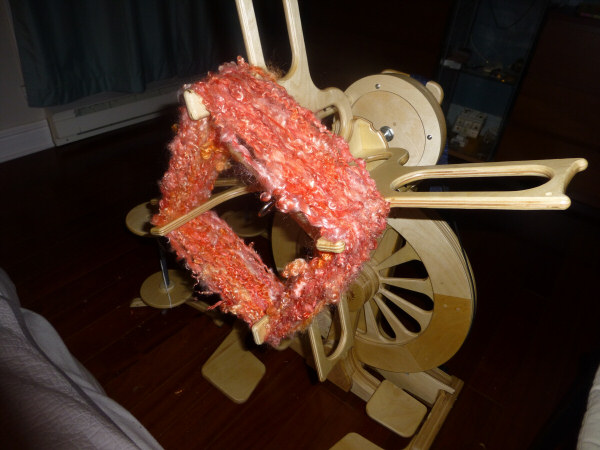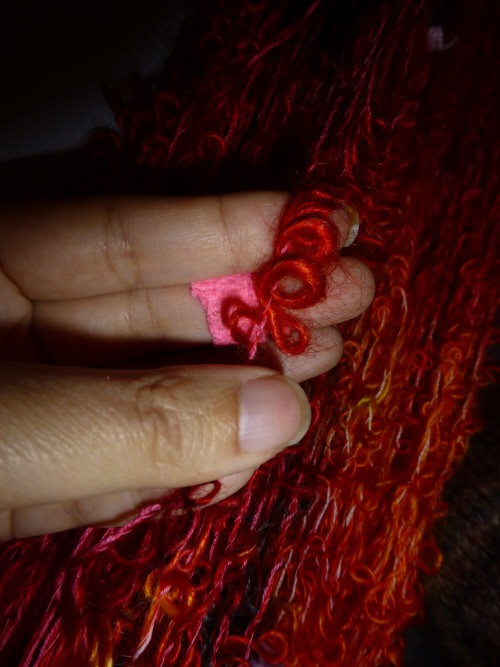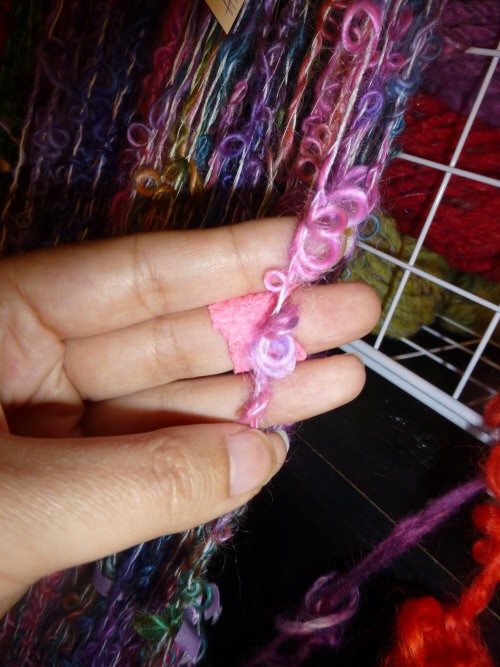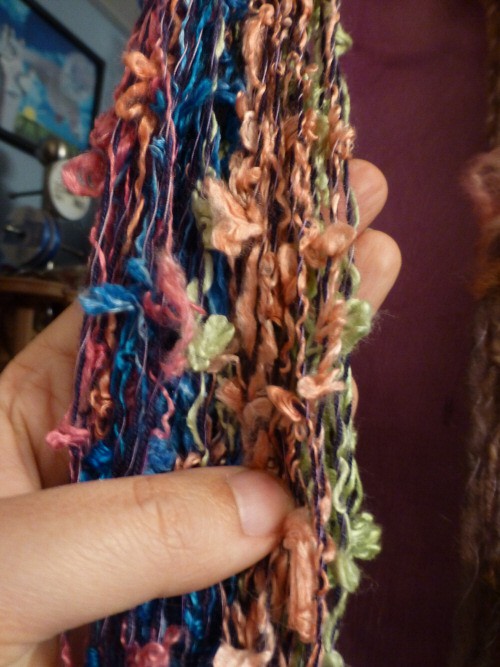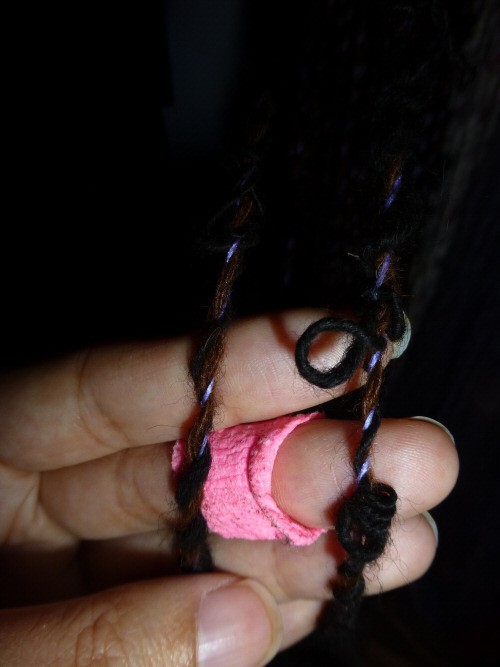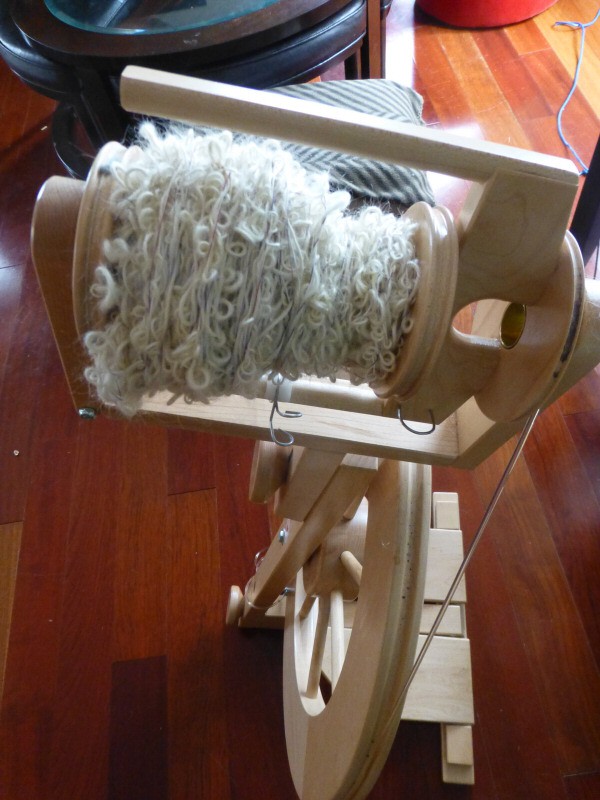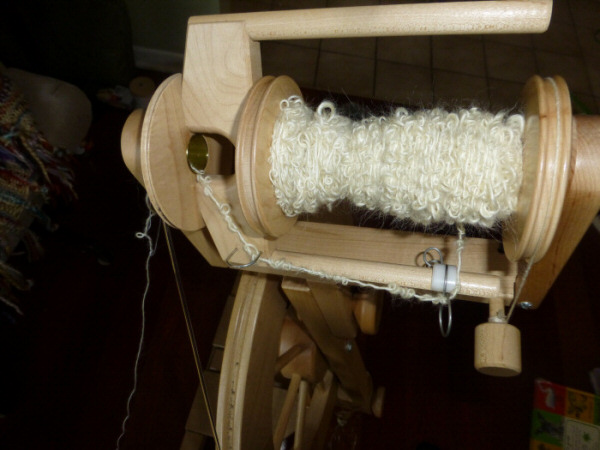
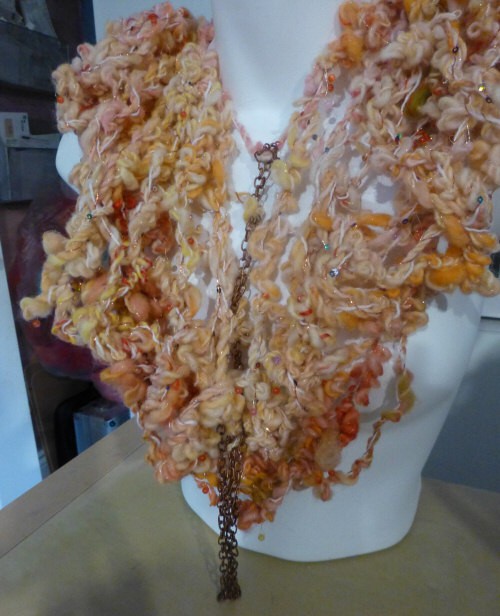
I made this yarn out of…frustration? Boredom?
I was really dissatisfied with the original yarn. So I decided to go for broke, and see what would happen if I boucléd it around some commercial cotton. This crazy handmade yarn is the result.

The outcome is certainly interesting to say the least! So what to do with it? I now have a bulky, buckled spiral yarn made of wool, banana fibers and beads (now, cotton yarn added to that mix). What in the world to make with this hot mess & a half?
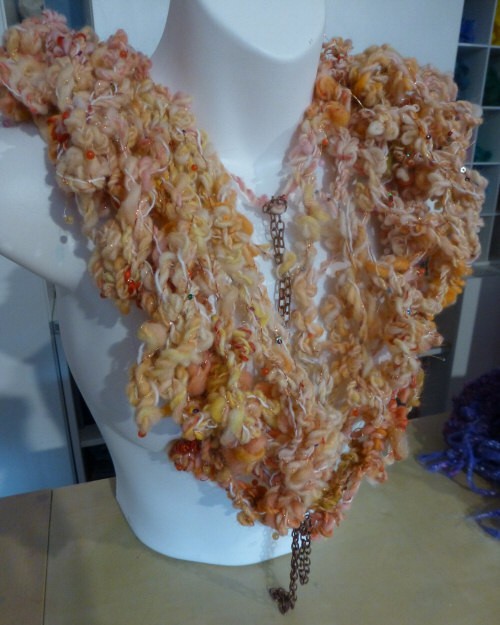
When in doubt with a funky bulky handspun, I always turn to the elongated knit stitch. There are many different variations but one that I love to do is really simple. Cast on the number of stitches you want, insert needle to knit one, but bring yarn around both needles before looping around the inserted needle like a regular knit stitch. This extra bit of wrapping will elongate that stitch nicely.
Here is a video by Ashley Martineau of Neauveau Fiber Arts demonstrating the stitch. I love Ashley’s videos and her spinning style! I probably learned this stitch from her originally, a video tute on a pillow cover comes to mind. 🙂
So back to this funky creation I made with this yarn-I-was-so-fed-up-with and a simple knit stitch. I was shocked by the result. I didn’t expect much from this so I didn’t keep any notes. But I cast on approx. 80 stitches on large circular needles (17 comes to mind, possibly bigger). Then it was elongated knit stitch until I had just enough to bind off. That was it. Total TV watching knitting.
My intention was to make a cowl or infinity scarf, but I guess you could call this what – like a shurg or a shawl too? And once I started to tug it out/form it it was screaming for this chain detail.
These are the things I love to make. Happy accidents. Throw all the rules out the window and just go! I get so caught up in perfecting technique sometimes it’s nice to forget it all; not have a plan and see what comes. This may still be a total hot mess, but I know one thing. I throw this on with a nice jacket, and I have a conversation piece. And that is true artistry to me.
The moral of this story is: don’t be shy to go there and totally own the result. 🙂

